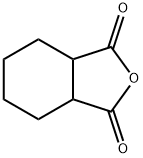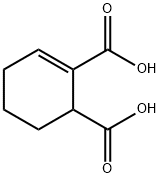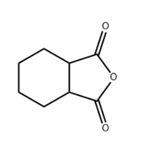Description
Hexahydrophthalic anhydride (HHPA) is widely used for electronics applications, e.g. HHPA cured epoxy resins have excellent dielectric properties, high-temperature stability, and high glass transition temperatures. HHPA is used as a curing agent in adhesive coatings and sealant materials, e.g. for the second-generation two-part epoxy adhesive synthesis. Hexahydrophthalic anhydride is also used in the manufacture of alkyd and polyester resins, insecticides, and rust preventives.
References
[1] Guy Rabilloud, High Performance Polymers. Vol. 1 Conductive Adhesives, 1997
[2] John Burke Sullivan and Gary R. Krieger, Clinical Environmental Health and Toxic Exposures, 2001
[3] B. A. G. Jönsson, H. Welinder, C. Hansson and B. Ståhlbom, Occupational exposure to hexahydrophthalic anhydride: air analysis, percutaneous absorption, and biological monitoring, International Archives of Occupational and Environmental Health 1993, vol. 65, 43-47
Chemical Properties
White crystalline powder
Uses
HPPA, in combination with triethaylamine (TEA), can be used as a polymerization initiator in the preparation of polyester based resins. It can also be used as a hardener to cure 1,4-butanediol diglycidyl ether which can be used as an epoxy based system for electronic devices.
Uses
Intermediate for alkyds, plasticizers, insect repellents, and rust inhibitors; hardener in epoxy resins.
Application
Predominantly cis 1,2-cyclohexanedicarboxylic anhydride (HHPA) is a cyclic anhydride that can be used for a variety of applications such as: plasticizer, rust inhibitor, and a curing agent for epoxy based resins.
HPPA, in combination with triethaylamine (TEA), can be used as a polymerization initiator in the preparation of polyester based resins. It can also be used as a hardener to cure 1,4-butanediol diglycidyl ether which can be used as an epoxy based system for electronic devices.
Definition
ChEBI: A cyclic dicarboxylic anhydride that is the cyclic anhydride of hexahydrophthalic acid.
General Description
Predominantly
cis 1,2-cyclohexanedicarboxylic anhydride (HHPA) is a cyclic anhydride that can be used for a variety of applications such as: plasticizer, rust inhibitor, and a curing agent for epoxy based resins.
Hazard
Toxic by inhalation, strong irritant to eyes and skin.
Flammability and Explosibility
Non flammable
Synthesis
Hexahydrophthalic anhydride is obtained by reacting ciscyclohexane-1, 2-dicarboxylic acid with oxalyl
chloride.Combine
ciscyclohexane-1, 2-dicarboxylic acid (1 mmol, 172 mg) and oxalyl
chloride (1.2 mmol, 152 mg, 0.103 ml) in dry toluene (5 mL) and add a
drop of freshly distilled DMF. Purge the reaction vessel with argon and
heat the reaction under stirring for 3 h. Stop the stirring, decant the
toluene solution and filter. Evaporate the volatiles. Transform into
crystalline form by trituration with diethyl ether. 1H NMR (400 MHz, CDCl3) |? 3.18 - 3.12 (m, 2H 2CH) 1.96 - 1.83 (m, 4H 2CH2) 1.57 - 1.49 (m, 4H 2CH2). HRMS (ESI), calcd for C8H10NaO3 [M+Na]+ 175.0522, found 175.0527; calcd for C9H14NaO4 [M+CH3 OH+Na]+ 209.0784, found 209.0788.

Fig The synthetic method of Hexahydrophthalic anhydride.
Purification Methods
It has been obtained by heating the trans-acid or anhydride at 200o. Crystallise it from *C6H6/Et2O or distil it. [Kohler & Jansen J Am Chem Soc 60 2145
1938, Abell J Org Chem 22 769 1957, Beilstein 17 II 452, 17 III/IV 5931.]







